Best guitar VSTs 2025: guitar plugins and software to supercharge your guitar recordings
Elevate your sound in the studio with our pick of the best guitar VSTs for guitarists
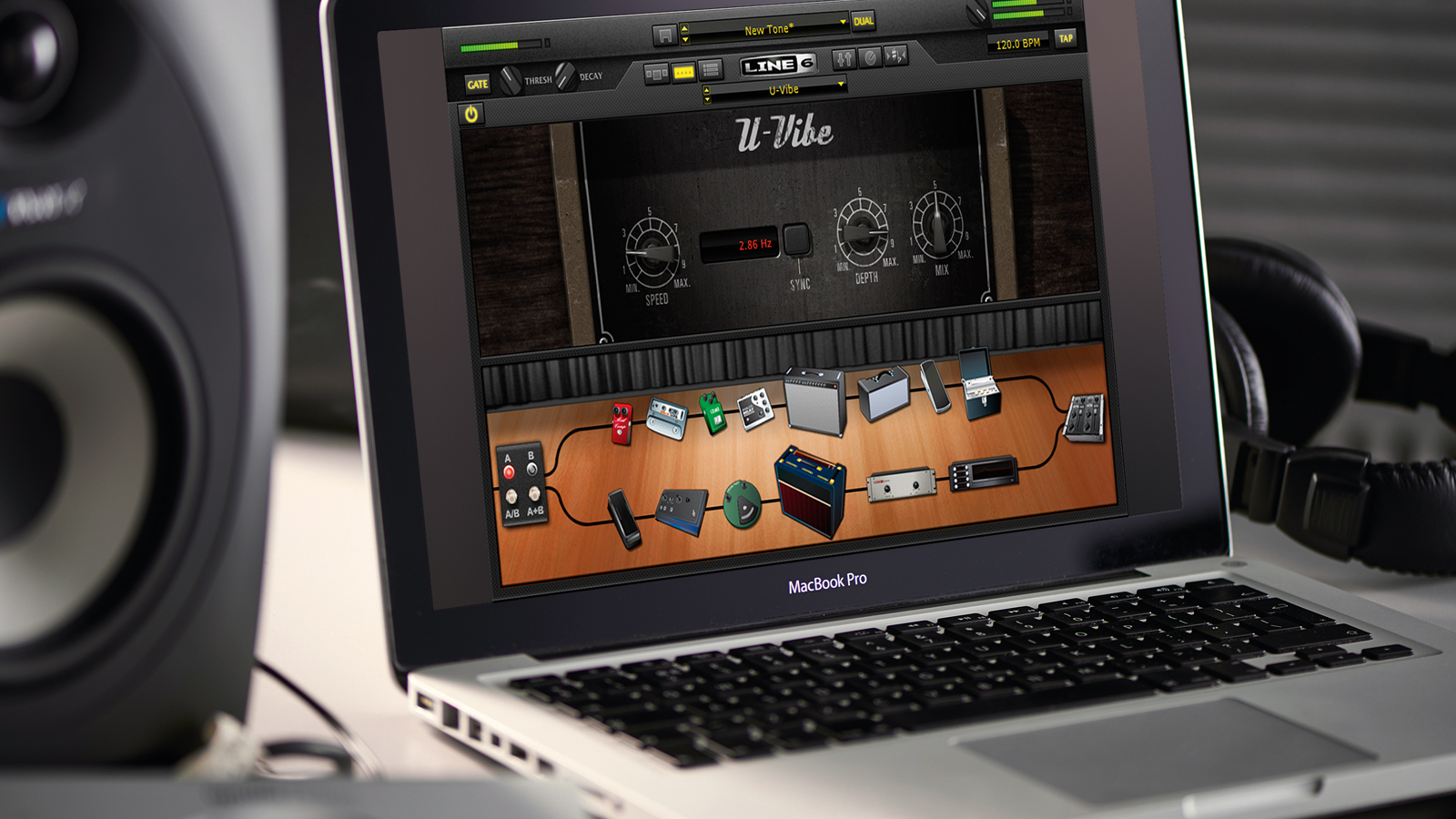
Recording guitar at home is not the dirty word it once was. Such has been the improvement in amp simulators and modelers over the years that more and more guitarists, producers, and mix engineers are taking to going fully ‘in-the-box’. Nowadays the best guitar VSTs are nigh on indistinguishable from the real thing and packed with features that would cost you tens of thousands to replicate in the real world.
Okay, so a super-experienced guitarist might be able to say ‘that’s not a real amp!’, but your average listener is never going to know the difference. When using a guitar plugin alongside an actual amp recording - as is often the case where time is short in the studio - it can actually benefit your recordings, instantly offering you different flavors of tone to thicken up your recorded one.
There are also loads of great effects you can use too. Some standalone, some bundled with amp models. With the majority of them, you’ll be able to apply automation to all of the parameters and there are some with feature sets and routing options that just wouldn’t be possible within the constraints of a regular stompbox.
There’s never been a better time to go digital, that’s why we put together this list of the best guitar amp and effects plugins to help you improve your productions. If you’d like to learn more about guitar VSTs, check out the buying advice section at the bottom of this article for more info. Otherwise, keep scrolling to see the best guitar plugins available today.
Best guitar VST: Our top picks
It was a hard-fought battle for the top spot of this list, there are so many amazing plugins out there right now, but we’ve decided to go with IK Multimedia’s Amplitube 5. It packs in an incredible array of amp models and effects, with official models from Fender, Orange, and others to assure you of its quality.
Coming in a close second, we went with the much-heralded Positive Grid BIAS AMP 2. It has some of the best sound quality we’ve ever heard from an amp sim and loads of great effects too.
Best guitar VST: Product guide
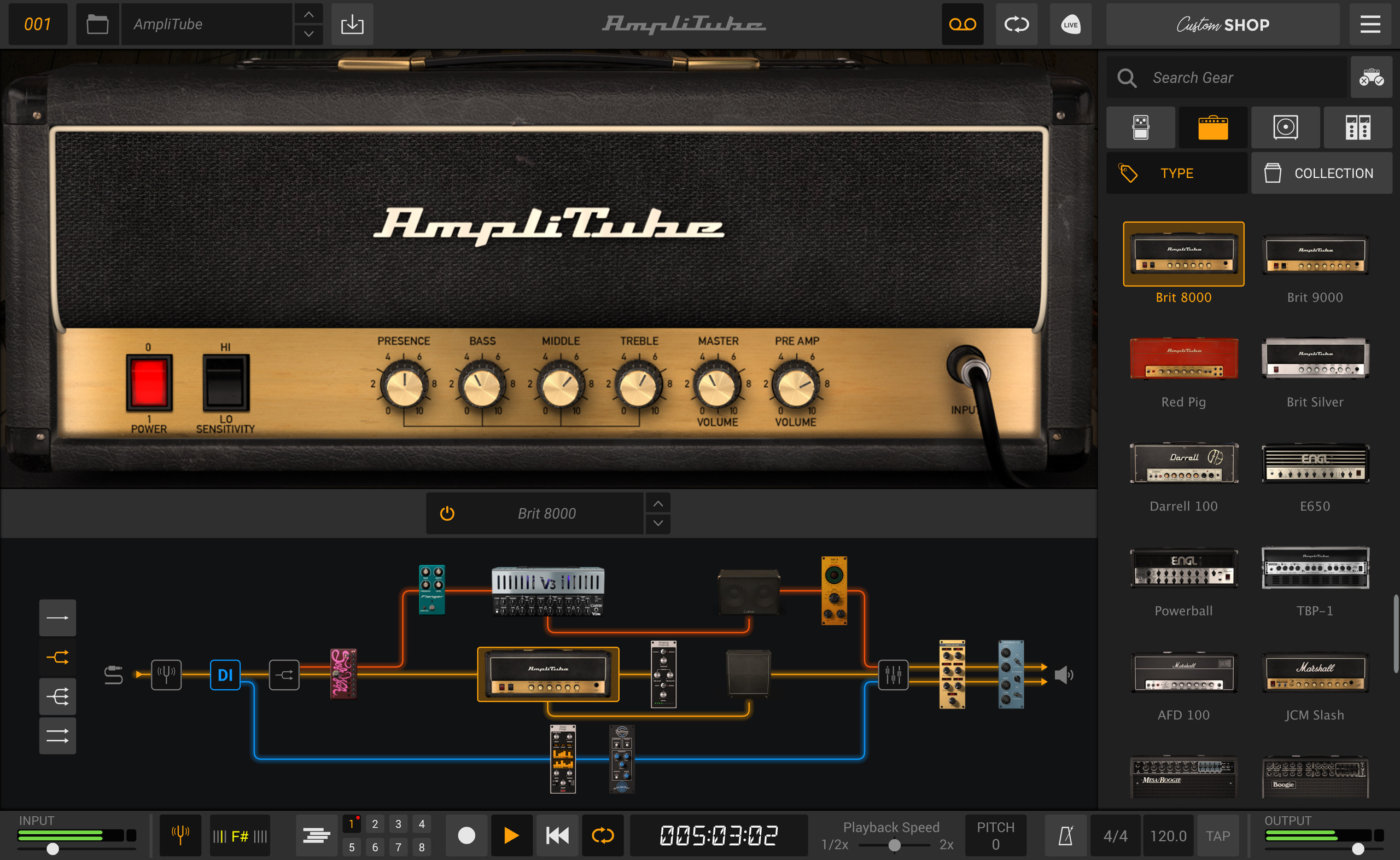
Specifications
Reasons to buy
Reasons to avoid
IK Multimedia’s original Amplitube was one of the trailblazers in amp and effects software. Twenty years later, it has come a long way and Amplitube 5 proves IK Multimedia is still ahead.
The options here are staggering – with not only a wealth of stellar amp and effects but features for writing and performance too. But for this latest version of Amplitube, V.I.R Technology is a notable evolution; it offers millimeter-accurate virtual mic placement, culminating in 600 Impulses per speaker to completely re-shape tonal response and character far beyond EQ tweaking.
Of course, amp and effect models are the main course here and all the classics are covered here, with new amps including PRS Archon, Friedman Pink Taco, Bogner XTC, and Diezel VH4 and an intuitive drag and drop signal chain delivering limitless tonal possibilities.
Read the full IK Multimedia Amplitube 5 review
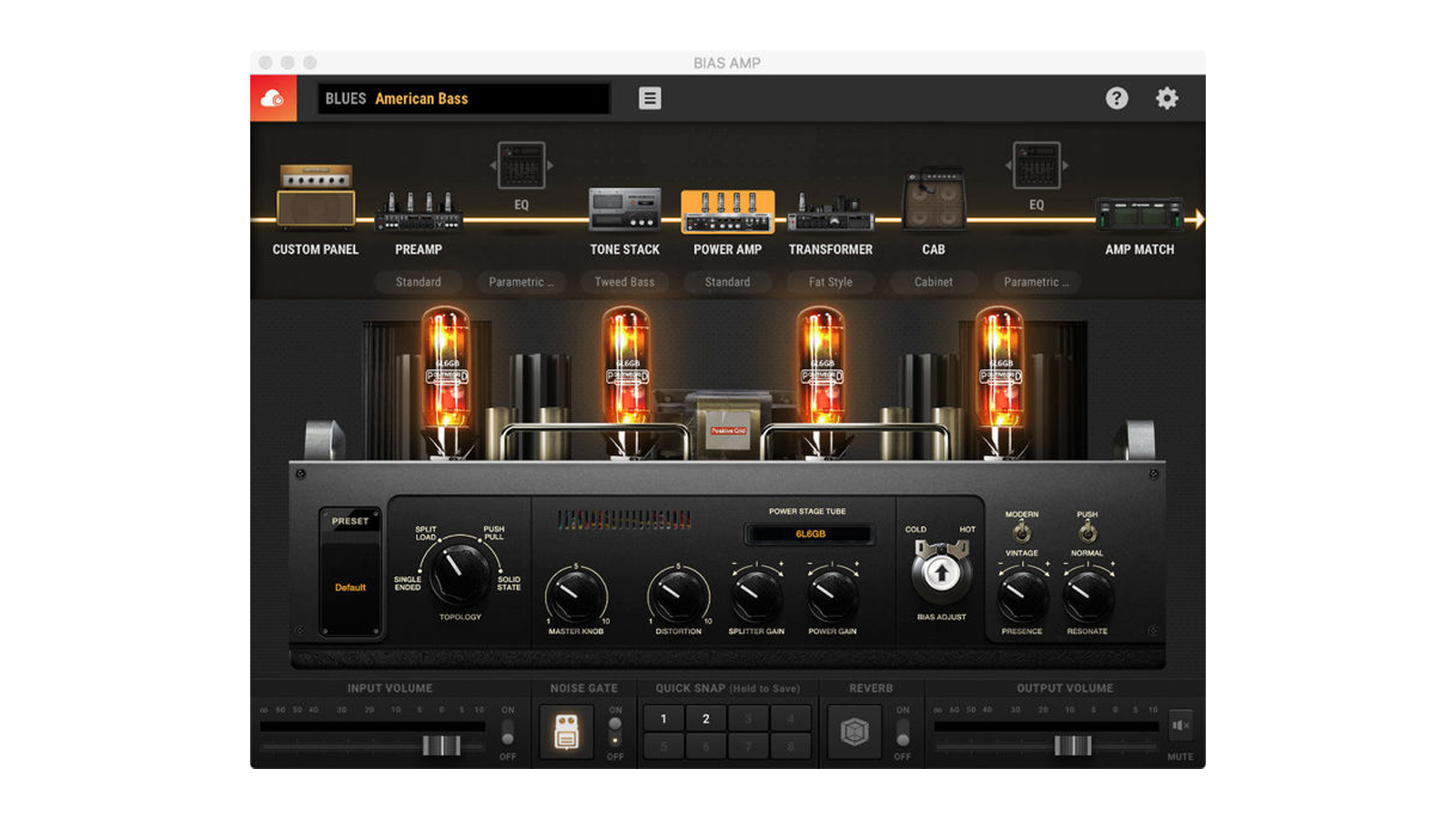
Specifications
Reasons to buy
Reasons to avoid
If Positive Grid wasn’t the first to bring amp sims to DAWs, they’re certainly the ones that have made the biggest impression. Now in its second iteration, the Positive Grid BIAS AMP 2 brings more of the features and tools that guitarists love into what we believe is an incredibly useful package.
The premise is that each individual component of an amp’s signal chain can be tweaked, changed or replaced. Everything, right down to the type of transformer, or the pre-amp tubes, or even how hot you run the tubes, is up for grabs. If you can’t get a good tone out of this sim, then amp sims probably aren’t for you. We particularly loved the higher gain tones. These are often a barometer of how good an amp sim is, yet here they stood out superbly in our mix.
The BIAS AMP 2 doesn’t include any effects other than a basic reverb – they come in a separate package. However, this is balanced by the inclusion of an Amp Match feature, which we loved. Essentially, you give it an amp sound, either from your playing or from a recorded track, and using its multitude of variables the sim will attempt to match it, usually to a decent level. Well worth checking out.
Read the full Positive Grid BIAS AMP 2 review
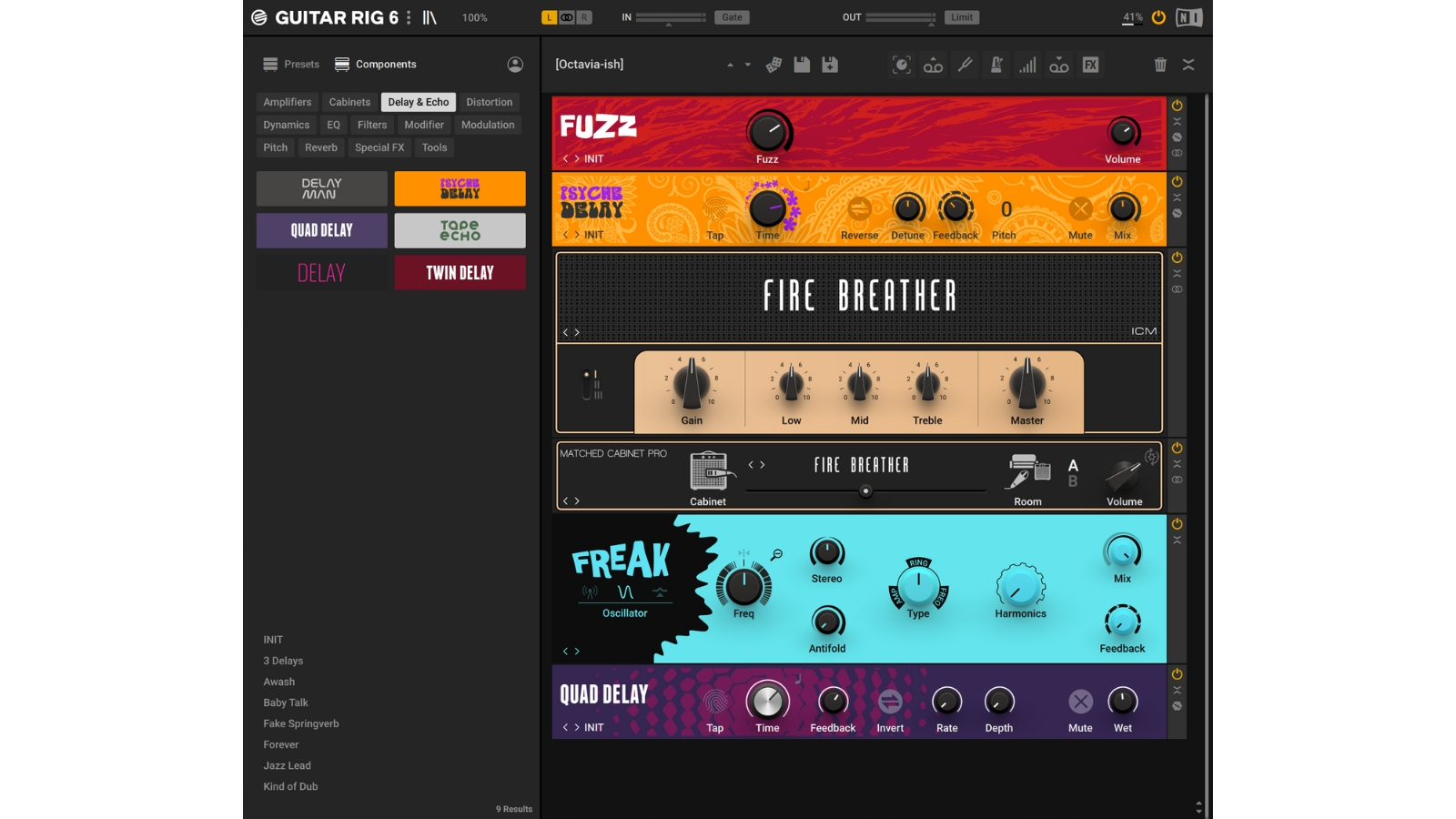
3. Native Instruments Guitar Rig 6 Pro
Our expert review:
Specifications
Reasons to buy
Reasons to avoid
Already a legendary guitar processing workstation in its own right, Native Instruments Guitar Rig 6 Pro sees the software get a serious update. Guitar Rig has a reputation for doing things a little differently from other, more traditional amp sims, with an emphasis on sound design and creative expression rather than painstaking hardware emulation.
The new GUI is rather nice to look at, offering several improvements to the previous iteration. It’s now resizable, super handy when you’ve got massive chains of devices, and there’s a brand new library that takes inspiration from the NI Maschine, letting you search presets by the nature of the sound itself.
Soundwise there’s so much here that it needs a whole article on it. We loved the Bite and Dirt modules, which can be used for warm saturation or all-out audio destruction. There’s also a great selection of modules from Komplete 12 like compressors and some great IR reverbs. Tie in a selection of classic and modern amp heads and cabinets, and you’ve got some serious depth on offer.
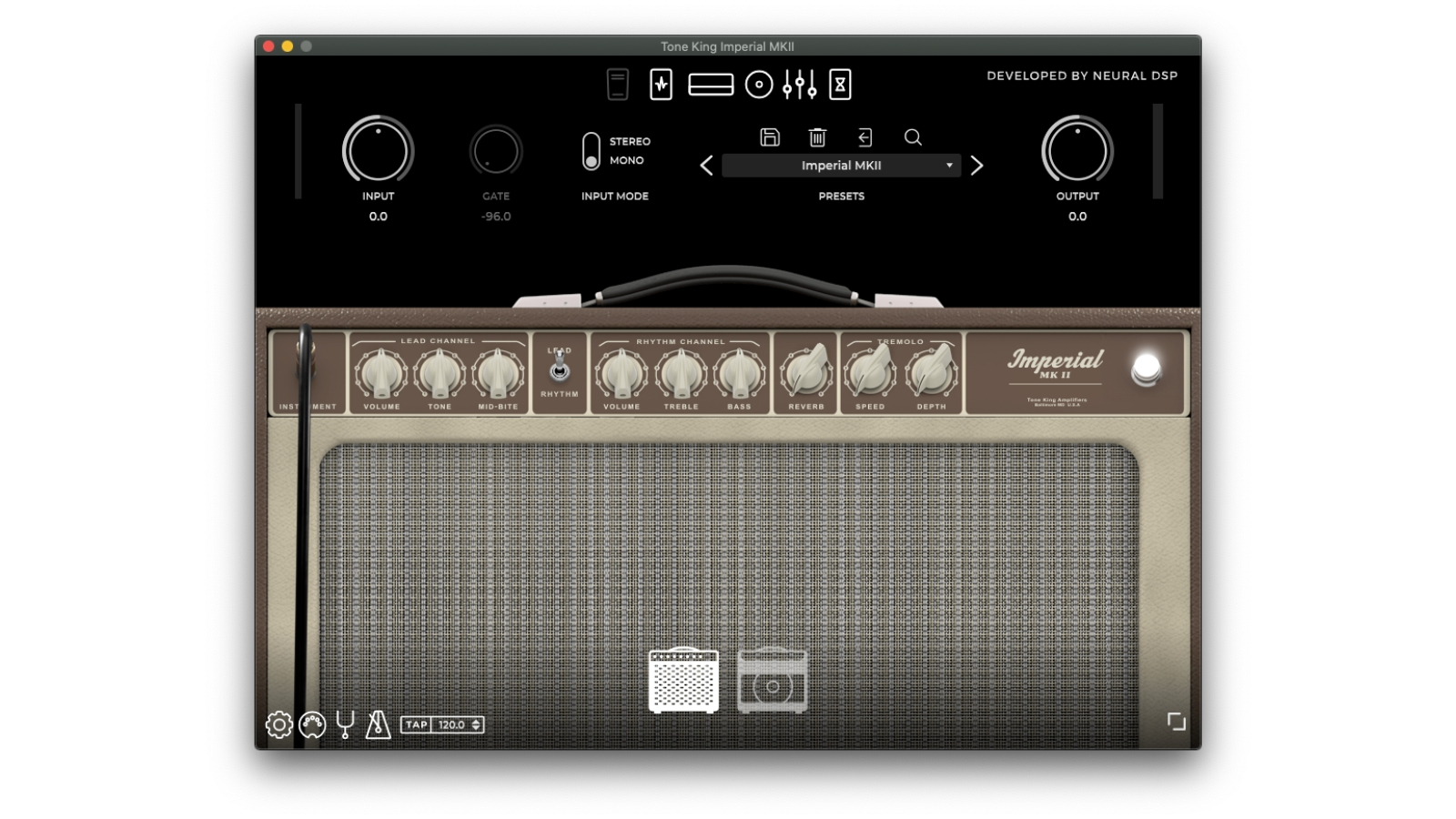
4. Neural DSP Tone King Imperial MKII
Our expert review:
Specifications
Reasons to buy
Reasons to avoid
The Neural DSP Tone King Imperial MKII is one of the finest tube amp simulations we’ve ever heard. Neural have been making waves of late with its super accurate amp sims, and the Neural DSP Quad Cortex got a full five stars in our review. Based on similar tech, Neural’s standalone plugins do a similarly excellent job of conveying natural guitar tones.
The layout is as simple as you can get really, looking exactly the same as the real deal, the Tone King Imperial features two channels, EQ controls, and built-in reverb and tremolo for adding depth and breadth to your sound. Extra versatility is offered by the outboard EQ, a selection of post and pre-stompboxes, and the mic placement page with 8 classic mic emulations to choose from.
As far as we’re concerned it’s one of the best clean amp sims we’ve ever heard, the perfect platform for adding other effects too. It does that tube edge-of-breakup thing wonderfully, and you can really push it to full-on saturation on the drive channel too. Combined with a fine mic selection, two IRs for speaker choice, and the ability to load your own IRs, this is the perfect plugin for vintage guitar tone lovers.
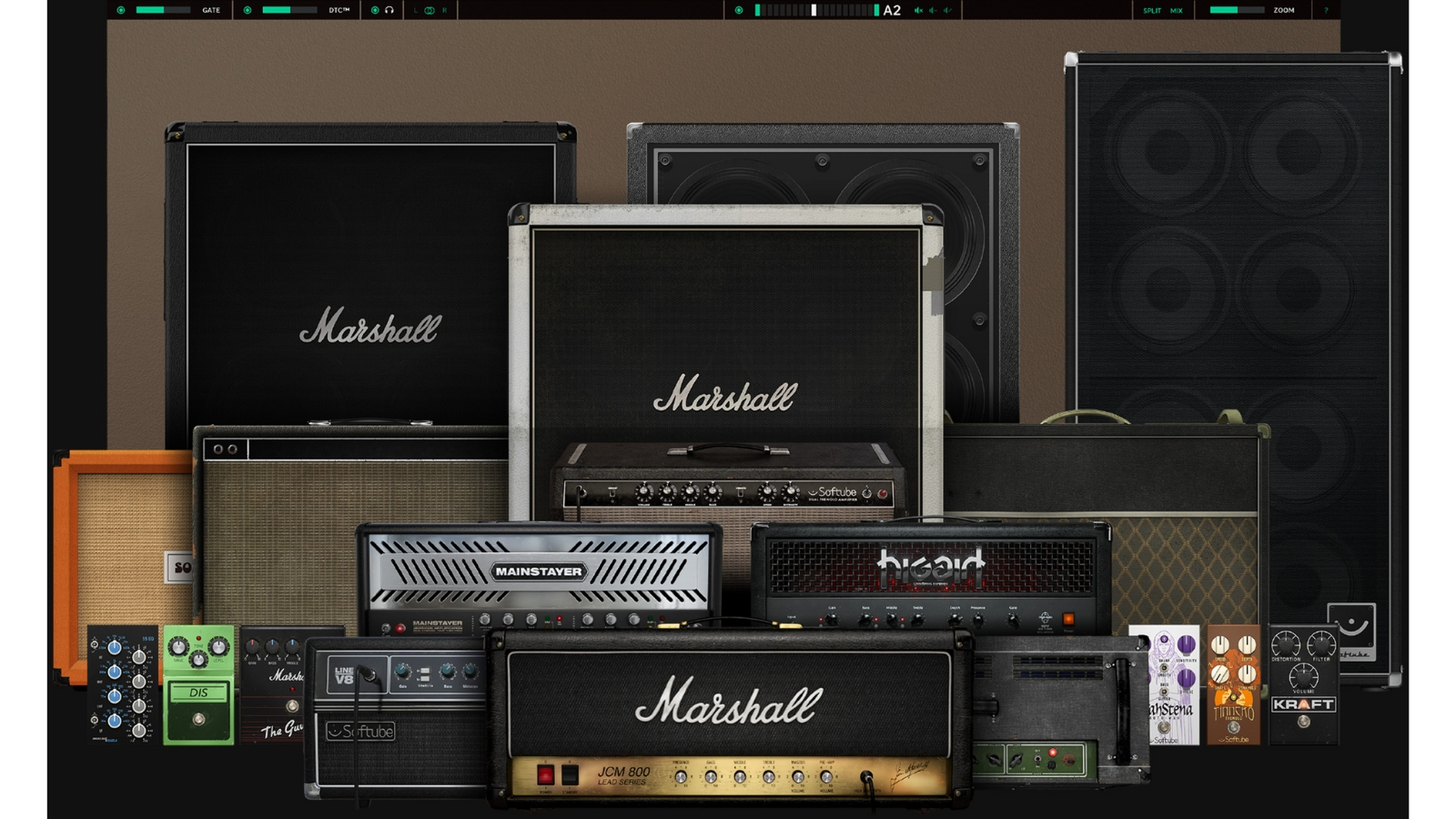
5. Softube Amp Room
Our expert review:
Specifications
Reasons to buy
Reasons to avoid
Softube’s Amp Room is designed to give you realistic-sounding guitar amp simulations quickly. In fact, so good are the Softube emulations that Marshall amps decided to partner with the firm, using their emulations in their own modeling amps and letting Softube recreate a host of classics.
With a drag-and-drop GUI, it’s pretty easy to start creating your own chains in an intuitive way. Everything is laid out logically, so you can see and edit your full signal chain at any time. To save space when you load in an amplifier, it shrinks down to pedal size with the basic controls, great for when you’re working on a smaller laptop screen.
In terms of sounds, there are some hyper-realistic options here, particularly with the Marshalls. If you want high gain that’s covered, and there are some great clean tones too. Another interesting feature is the ability to use your other Softube plugins, alongside the built-in EQ, compressor, and room IRs.
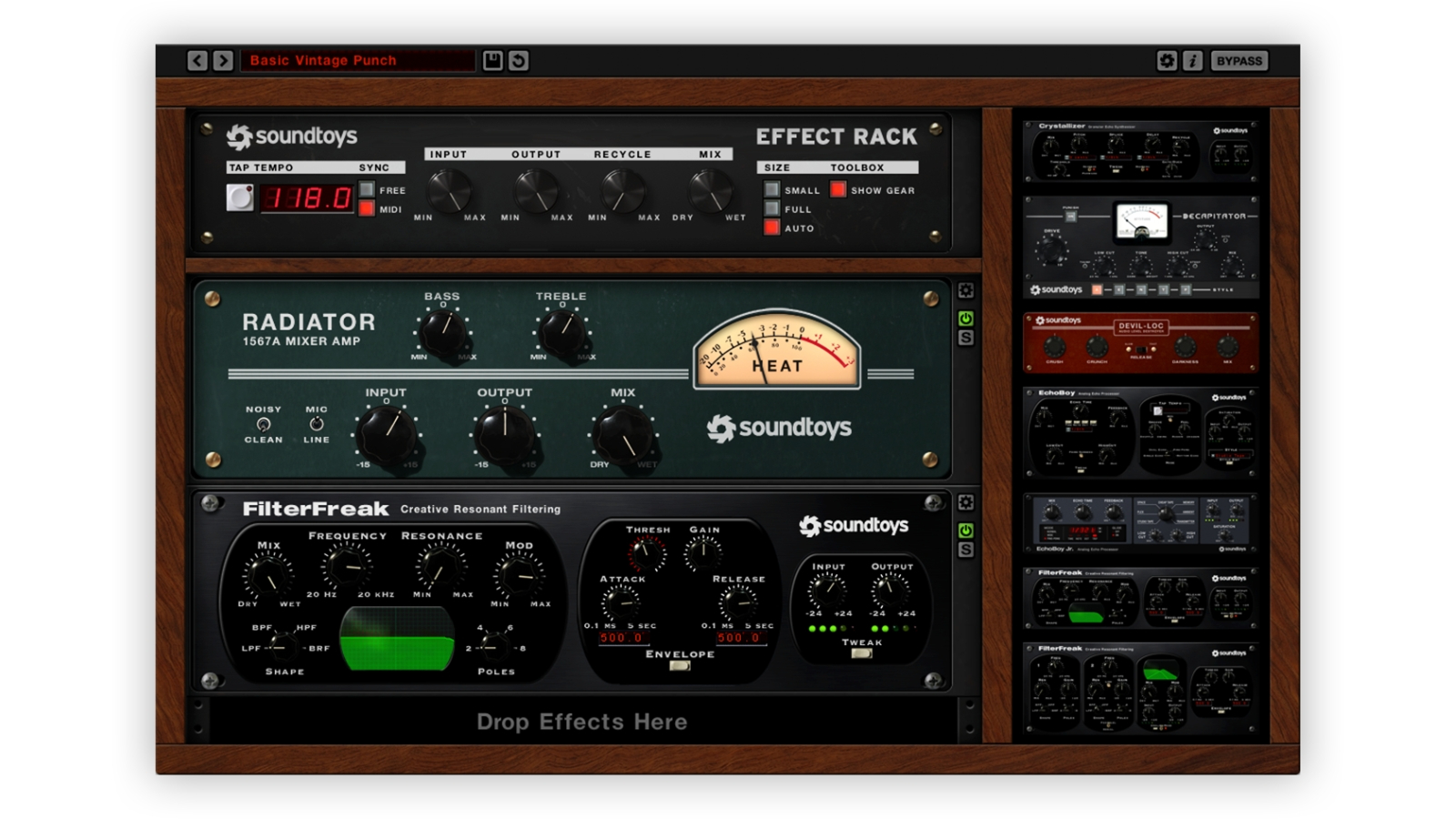
6. Soundtoys Effects Rack
Our expert review:
Specifications
Reasons to buy
Reasons to avoid
Okay so this isn’t strictly a guitar VST but hear us out, Soundtoys Effects Rack makes for an absolutely amazing virtual pedalboard and even better, makes sure your recorded guitars sit perfectly in the mix. Realistically no producer should be without some of these plugins, even if you’re not a guitar player.
Effects Rack is laid out very intuitively and quite literally, with everything sitting visually in a nice-looking rack unit. Drag and drop the modules you want into the chain, reordering and tweaking parameters using the knobs and dials. There aren’t loads of submenus here which is handy, the majority of controls are right there and ready to rock.
Use the Crystallizer to add pitch shifting and granular reverse echoes. Or the Tremolator to add subtle or warble, or full-on beat-synced rhythmic chops. With classic effects like the EchoBoy delay unit and PhaseMistress, there’s no shortage of inspiration here to refresh your guitar tone. If you haven’t tried the Decapitator yet then get ready, that thing’s going on all your mixes from now on.
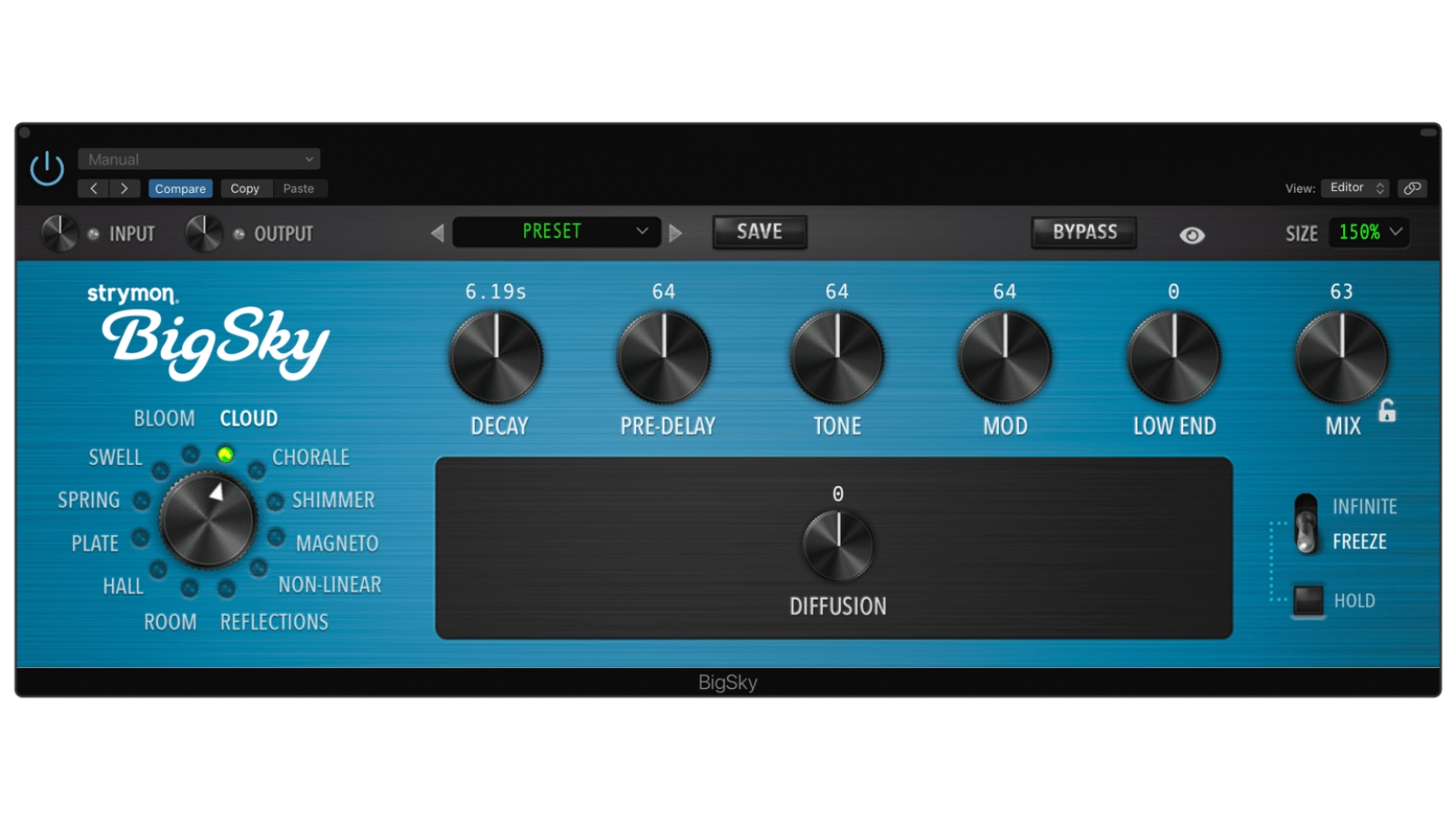
7. Strymon BigSky Plugin
Our expert review:
Specifications
Reasons to buy
Reasons to avoid
When we heard that one of our all-time favorite reverb pedals was getting a plugin we couldn’t wait to get our hands on it. The Strymon BigSky Plugin represents the company's first dive into the box, and it’s no surprise really. The BigSky pedal is so good that it transcended traditional guitar players, finding use in studios all over the world as an outboard effect.
If you’ve ever used the pedal then the layout will be immediately familiar. Unlike the pedal however there are no submenus here, everything is located on one screen and within easy reach. It’s super easy to use, and it won’t be long before you’re dialing in everything from immense shimmer verbs to natural room reverbs.
In terms of sound, we’d say it’s pretty much indistinguishable from the pedal. If anything the plugin feels a touch more reserved than the guitar pedal, which may be due to the use case for each. It does the basic reverbs well, as you’d expect, but there are some spectacular sounds in the Bloom, Cloud, and Shimmer algorithms.
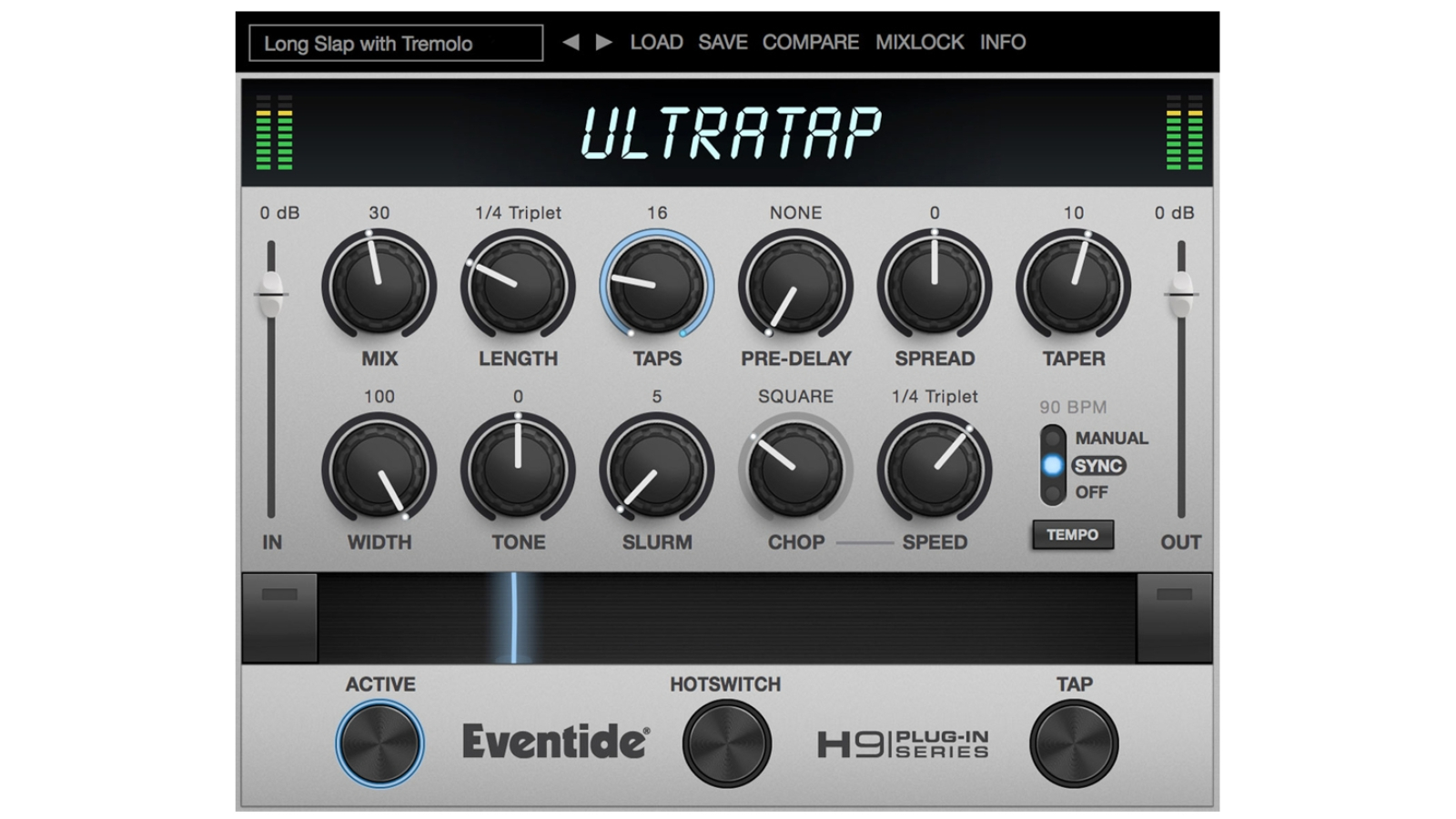
8. Eventide UltraTap
Our expert review:
Specifications
Reasons to buy
Reasons to avoid
Considering the cost of the actual delay pedal, the Eventide UltraTap plugin is fantastic value for money. Consisting of some rather unusual delay sounds, it’s a great tool to have in your arsenal when you need something beyond a classic tape delay emulation.
All of the controls are present and accounted for in one screen, so need to deep dive into menus. That doesn’t mean there isn’t a tonne of flexibility on offer here, however. You might notice there’s no ‘feedback’ control as you’d normally expect, instead this is replaced with ‘taps’, Eventide’s unique way of controlling delay feedback.
UltraTap is great for some out-of-this-world delay sounds. You can add drive to your delay tails, comb filtering effects, swells, and plenty more. The ‘slurm’ control gives you modulation and pitch-shifting effects, resulting in a multi-voiced, detuned style delay that sounds absolutely phenomenal.
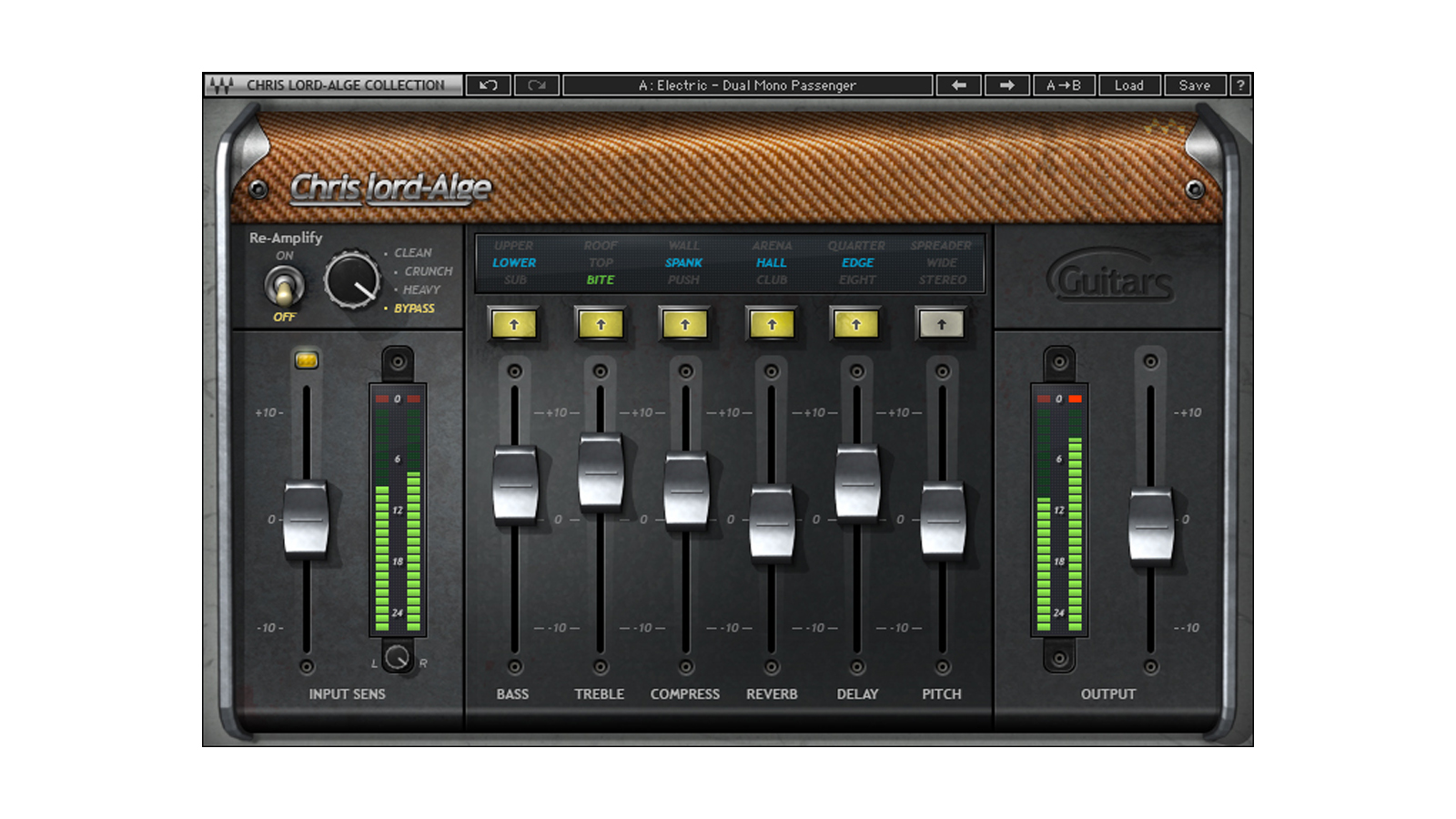
9. Waves CLA Guitars
Our expert review:
Specifications
Reasons to buy
Reasons to avoid
With a name like Chris Lord-Alge behind it, the CLA Guitars plugin from Waves Audio was bound to come with a certain level of quality. As a pared-down amp sim, this delivers a relatively small selection of guitar-specific tones, but what is there sounds fantastic.
You get three ‘channels’ - clean, crunch and heavy - and a small selection of effects, so there isn’t much in the way of experimentation on offer. But if it’s a quick and easy way to achieve the high-quality guitar sound you’re after, this could be your guy.
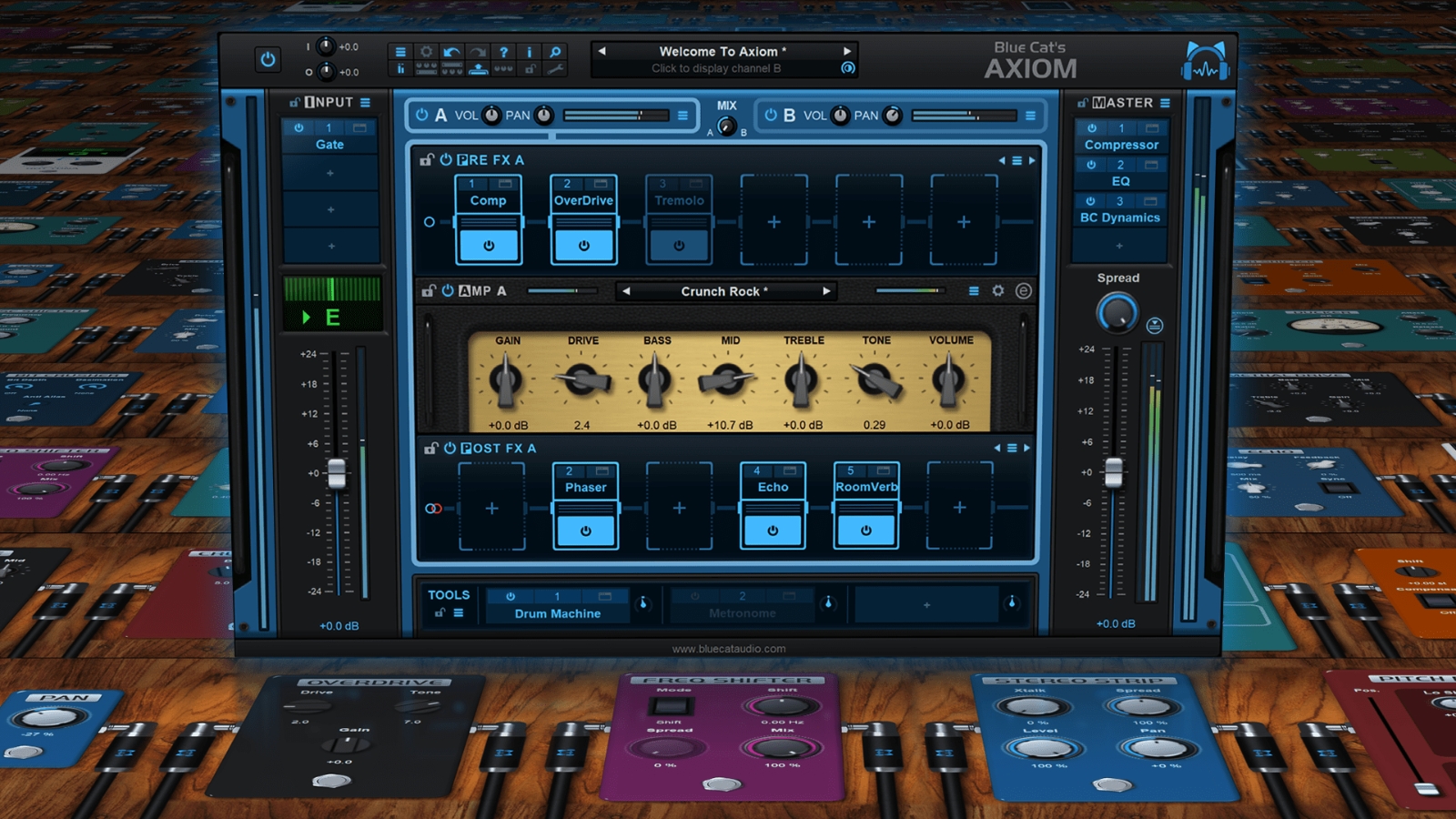
10. Blue Cat's Axiom
Our expert review:
Specifications
Reasons to buy
Reasons to avoid
Blue Cat’s Axiom follows up their sleeper hit Destructor, offering some massive improvements in both sound, GUI, and routing flexibility. If you’re the type of player who isn’t in the market for vintage tube amp recreations, then this versatile plugin might be the one for you.
One of the best things about Axiom is that you can configure your signal every step of the way. Add any of your effects or plugins on the input stage, which goes into a pre-amp pedalboard where you can add six more stompbox effects. You then get to your amp with its own customization options before the post-FX, then finally the output where -you guessed it - you can add further effects and plugins.
The amp models sound awesome and thanks to the flexibility of the input and output stages, you can dial in pretty much any sound you like. The amp section - based on Blue Cat’s Destructor - gives you anything from vintage analog amp tone right through to hard clipping and bit crushing, so you certainly won’t be short of options here.
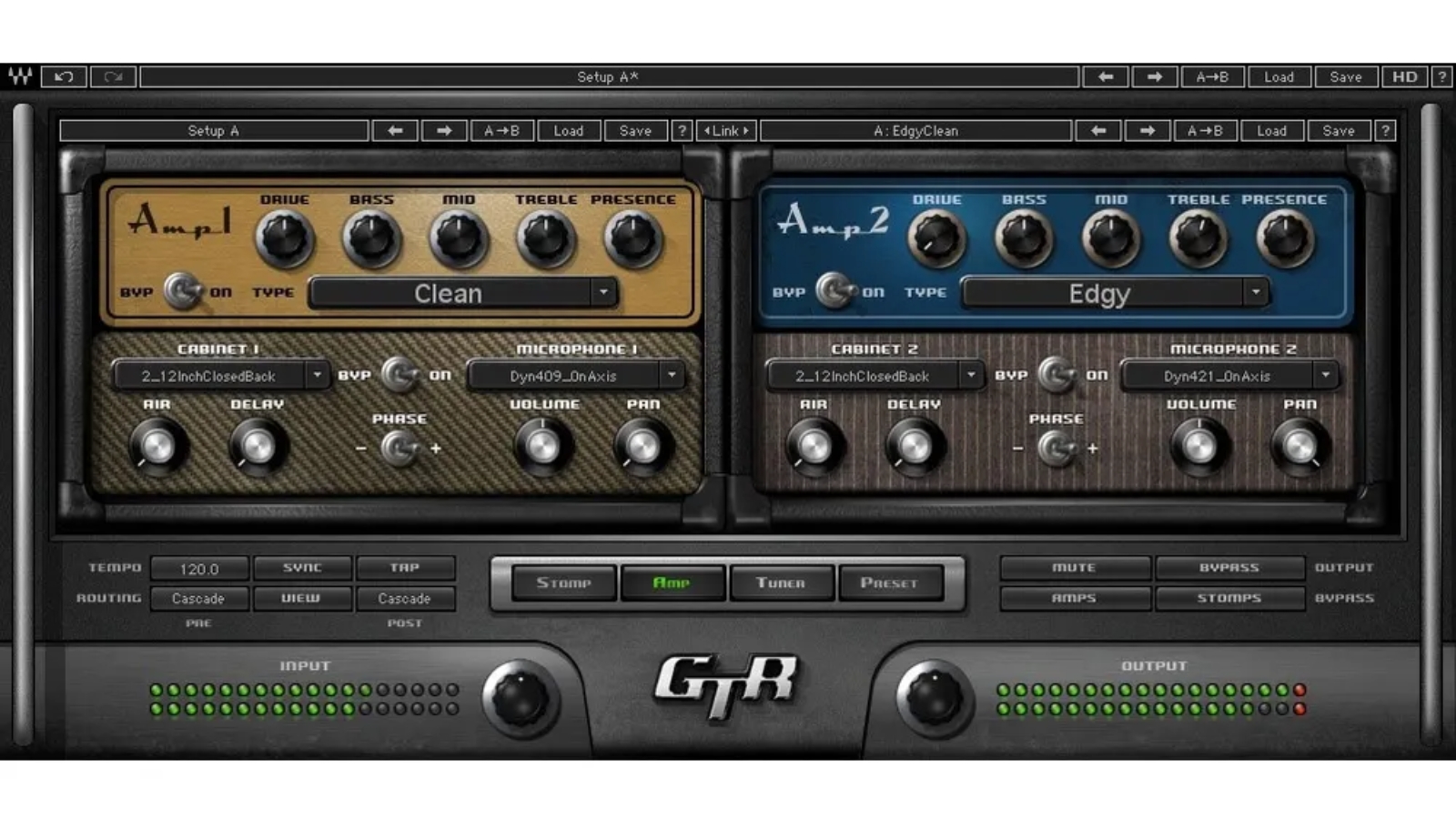
11. Waves GTR3
Our expert review:
Specifications
Reasons to buy
Reasons to avoid
Waves’ GTR3 software originally came priced at north of $400 with its own Waves DI box. Thankfully Waves now offer the plugin as a standalone, and at the time of writing you can find it for less than $30, which is less than some single plugin's cost.
The plugin can be split into different sections, so if you only want to use the pedals or the amp separately, you can do that. The GUI is showing its age a little in terms of graphics, but it’s nice and easy to set up and get running. You can run amps in stereo or mono, adding various cabinet and studio microphone options.
In terms of amp models, everything is how you’d expect, you’ve got your clean, driven, and high-gain models, as well as some for bass guitar players. The stompboxes are fairly basic, with all the classics represented like the tube screamer, octave pedal, reverb, and delays. It’s very utilitarian but for the producer who’s making tracks that don’t feature guitar front and center, it certainly gets the job done.
Best guitar VST: Buying advice
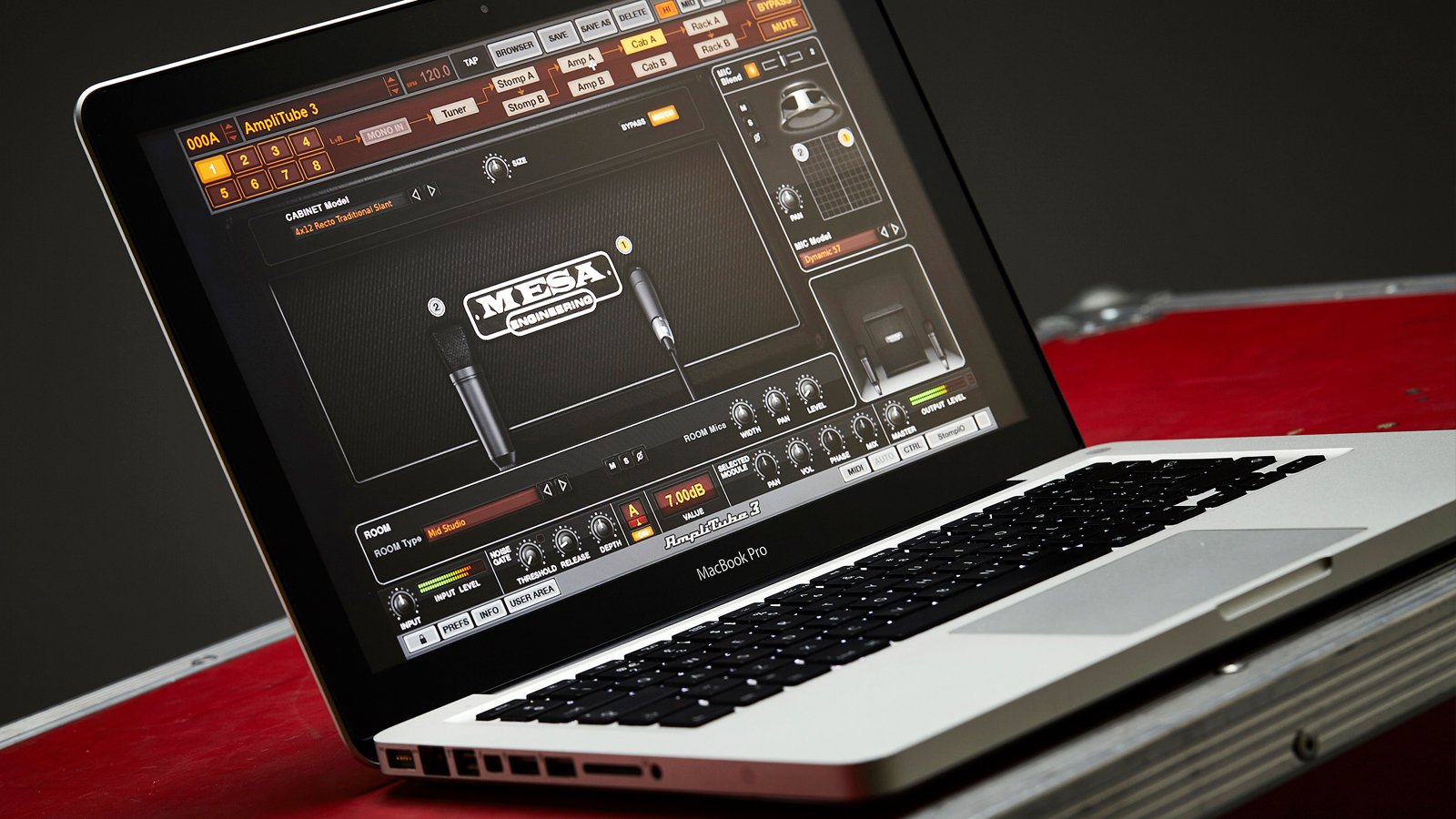
Similar to amp simulators or modelers a guitar VST allows you to get great guitar sounds from the comfort of your DAW. However we’ve not limited this article just to amp simulators, so you’ll find some plugins that are just standalone effects and even a couple that aren’t specifically designed for guitar.
What is a guitar VST?
A guitar VST is a piece of software that emulates the sound of amplifiers, cabinets, and stompbox effects. It can also be software that emulates someone playing the guitar for you, but these are few and far between, mainly because it’s so difficult to recreate the nuances of a human player.
Guitar VSTs are loaded into your DAW (Digital Audio Workstation) as a track insert, so you can convert your DI guitar tone into a realistic-sounding amplifier with minimal fuss. A lot of guitar VSTs also come with standalone software as well, allowing you to practice and hone in your settings outside of your DAW.
How do I use a guitar VST in a digital audio workstation?
Once you’ve installed your plugin, you’ll need to navigate to the plugin manager of your DAW and perform an update/refresh to get the plugin to show. Then head back to your project, add a track, and you should be able to select it from the inserts list.
If it still doesn’t show up, then make sure your DAW plugin manager is pointing toward the right folder. Depending on what you’re using, these can sometimes be located in Program Files or Common Files on Windows, or on Mac, in your system or user Library under Audio/Plug-Ins/Components.
It’s always good practice to make a note of where the plugin is going during the installation process, as many different manufacturers install them in different places. We always make sure we have a specific plugin folder and point everything to that when we install them!
How can I achieve a realistic guitar sound using a VST?
There are a lot of factors that go into creating realistic guitar sounds in the box. If you’re using a VST instrument that plays the guitar for you, we’re going to be honest, you’re not likely to get a realistic sound this way. In fact, it’s probably better economy to hire a session guitar player to play the part for you. There are loads of great sites for this online, and it doesn’t cost as much as you might think.
If you’re wanting to dial in a great guitar sound on a guitar plugin, then there are a few steps you can take. First of all, we need to consider what we’re using it for. Are you practicing alone and just want a great tone? Or are you trying to record your guitars in a full mix with bass, drums, and vocals?
If it’s the former, then things are a lot easier. We’d start with a preset and tweak from there. Too bassy? Turn it down on the amp sim? Needs to be more metal? Scoop the mids a little. You can generate a lot of change from just the amp controls themselves. You can also tweak the cabinets as well, change the microphone your ‘miking’ the cab with, and add FX in post to create your perfect sound. Just keep tweaking til you get what you want.
If you’re trying to fit it into a mix then that’s a whole different ball game. First of all, avoid adjusting anything in solo, you always want to be making changes with the whole mix in perspective. Secondly, layering different guitar tones is key to making a big guitar sound. Multi-tracking your parts with different amp tones will go a long way toward improving the overall sound.
Consider the EQ profiles of each sound as well, does one have scooped mids? Well on the double track add those mids in and take the bass and treble down a touch so they complement each other. Try not to use too many effects on each, instead go for delay on one and reverb on the other so they’re complementing each other rather than fighting for space.
Lastly, you’ll need to EQ and compress the guitars together to get them feeling like one unit. Using a glue-type bus compressor can add a lot of unity, giving your guitar weight. Likewise, EQing out the rumbling low end can help them sit better against the bass guitar and kick drum. Trust your ears, if it sounds good, it probably is good, regardless of how you got there!
Are there any amp sim plugins that emulate specific amplifier brands or models?
Handily there are a few that offer official models. Amplitube 5 comes with official Fender, Orange, ENGL, Mesa/Boogie, and many more amp and stompbox models that have the original manufacturer's seal of approval. Softube Amp Room also features official Marshall models, so you can get that hallowed JCM800 sound from the comfort of your home studio.
Read more about how we test music-making gear and services at MusicRadar.
Related buyer's guides
MusicRadar's got your back
- The best guitar audio interfaces for recording guitar at home
- Our pick of the best vocal plugins
- The best studio monitors for music-makers
- Spend less with the best budget audio interfaces around right now
- The best studio headphones, for music production, whatever your budget
- The best in-ear monitors: IEMs to suit all budgets
Get the MusicRadar Newsletter
Want all the hottest music and gear news, reviews, deals, features and more, direct to your inbox? Sign up here.
Chris Corfield is a journalist with over 12 years of experience writing for some of the music world's biggest brands including Orange Amplification, MusicRadar, Guitar World, Total Guitar and Dawsons Music. Chris loves getting nerdy about everything from guitar and bass gear, to synths, microphones, DJ gear and music production hardware.
- Matt McCrackenJunior Deals Writer
"This is the amp that defined what electric guitar sounds like": Universal Audio releases its UAFX Woodrow '55 pedal as a plugin, putting an "American classic" in your DAW
“Customise your live rig with real-time precision”: IK Multimedia has just made its digital amp modelling ecosystem easier to manage with the Tonex Editor
